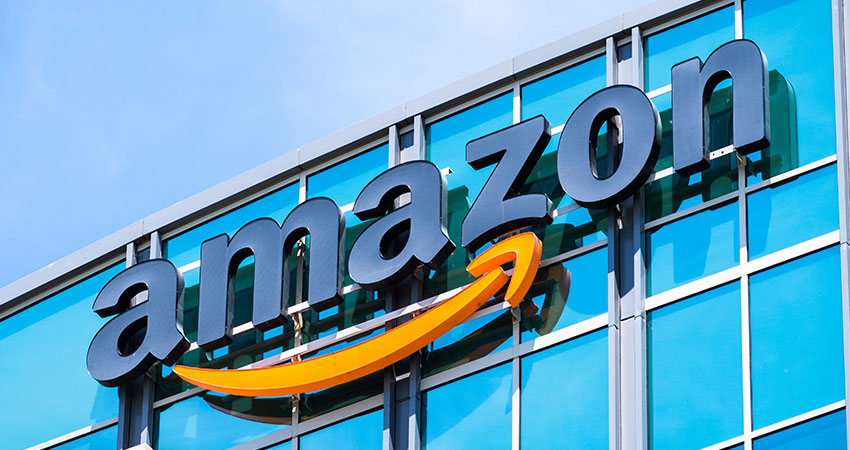The vaunted flywheel of Amazon has hit a bit of a snag. But given the company’s superpower ability to continually evolve and innovate, and the general trajectory of double-digit ecommerce growth, it may end up looking like a speed bump in hindsight.
A confluence of events led the ecommerce leader to stumble to its first quarterly loss since 2015, while finding itself in the strange position of having an overbuilt network of fulfillment, delivery and sortation centers and workers in reaction to the pandemic boom and the subsequent effect of variants.
And with labor pressure continuing to build in Staten Island, Alabama and elsewhere, including support from top progressive Democrats in Washington and new union votes cropping up, a workforce reduction would run into a buzzsaw of opposition.
[Update: workers at a second Amazon facility on Staten Island voted against joining the Amazon Workers Union (AWU) created by fired employee Christopher Smalls. Also, a National Labor Relations Board official has determined allegedly pro-union actions of the Brooklyn NLRB office merit a transfer to a different jurisdiction for a new hearing, and possible overturn of the result.]
Amazon’s reported Q1 net loss of $3.8 billion contributed to a massive panic slide on Wall Street on Friday, along with a disappointing outlook from fellow tech bellwether Apple. A pretax valuation loss of $7.8 billion on electric vehicle maker Rivian Automotive was a major contributor.
Now CEO Andy Jassy is overseeing a realignment of Amazon’s far-flung assets and operational structure to match the new reality of an inflation-driven falloff in sales, combined with massive cost increases.
Amazon CFO Brian Olsavsky told analysts on the earnings call that external inflationary pressure on things like shipping, fuel and labor, partly due to COVID-19 issues in China and the war in Ukraine, contributed $2 billion in incremental costs in the quarter.
He also detailed how Amazon staffed up late last year to replace workers out with the Omicron variant, then found itself overstaffed as the variant subsided and those workers returned; this coincided with the inflation hit to sales. The resulting loss in productivity cost another $2 billion, OIsavsky said.
“Despite still seeing strong customer demand and expansion of our FBA business, we currently have excess capacity in our fulfillment and transportation network,” he said. “Capacity decisions are made years in advance, and we made conscious decisions in 2020 and early 2021 to not let space be a constraint on our business. During the pandemic, we were facing not only unprecedented demand but also extended lead times on new capacity. And we built toward the high end of a very volatile demand outlook.”
This overcapacity led to another $2 billion in incremental costs, totaling $6 billion overall for the quarter, Olsavsky said, two-thirds of which are within the company’s control. Amazon is lowering capital expenditures in 2022 to better align it capacity with demand, while “evaluating other ways to increase our fixed cost leverage.” Despite these efforts, the company is still projecting $4 billion of incremental costs in Q2.
Colin Sebastian, a managing director with Robert W. Baird, said he sees Amazon recovering quickly from the bad quarter. “They need to grow into the capacity, and then the numbers would look better,” Sebastian said. “Unless you think ecommerce is no longer going to grow, this is a temporary issue for them.”
Marc Wulfraat, president of logistics consultancy MWPVL International, said a number of factors both internal and external will dog Amazon throughout the year. Wulfraat said Amazon is dealing with saturation of the unskilled labor pool, combined with the inflationary effect on wages and an aging population.
“It should not be difficult to shed labor costs due to the high labor turnover in the warehouses,” Wulfraat said. He added the union push may be expanding to Amazon facilities in Ohio, Illinois, North Carolina, Maryland, Michigan and California.
On the facilities side, MWPVL has decreased its estimate of new domestic fulfillment and operations space for Amazon in 2022 from 99 million square feet to 84 million square feet. The latter figure includes 20 million square feet not yet confirmed that may be terminated, like a recently canceled small sortable fulfillment center in Salinas, CA, in addition to other canceled or sublet projects. The company may look to close some older, less automated fulfillment centers, Wulfraat said.
According to MWPVL data, Amazon has 1,223 U.S. facilities totaling 379 million square feet, divided among fulfillment and sortation centers, receiving centers, returns centers, Whole Foods DCs, Prime Now hubs, delivery stations and airport hubs.
In addition, Amazon may look to pass some costs onto partners, while increasing revenue from its outsourced delivery operations to make up the gap, Wulfraat said. “All in all, 2022 is going to be about lowering the sails to ride out the storm and try to break even at best,” he said.
Juozas Kaziukenas, founder and CEO of Marketplace Pulse, agreed with Sebastian that subsequent quarters should take care of the over-capacity issue. He added that with ecommerce demand being pulled forward and then back again by the pandemic cycle, “it’s back on the trendline it was before COVID, and so is Amazon.”
“So, Amazon failing to grow in Q1 only looks bad when ignoring the two-year context,” he said. “Quarters to come are much more important as they will be compared against 2021 which was no longer boosted by COVID. If Amazon is still showing weak growth in Q3 and beyond this year, then that’s a concern.”

